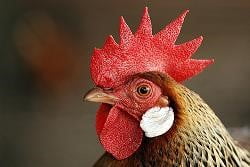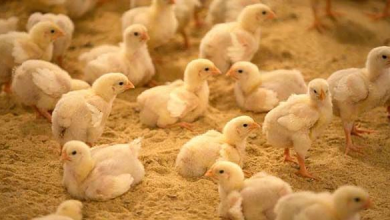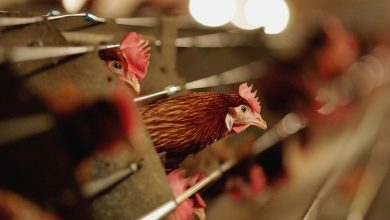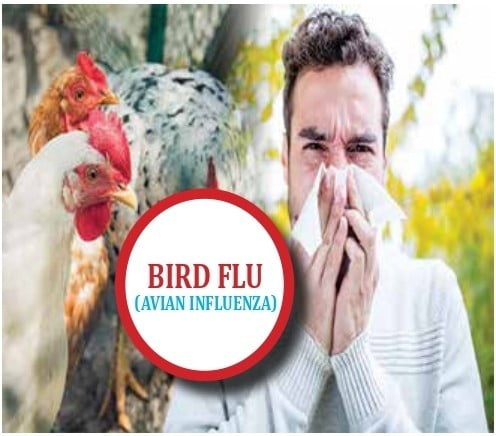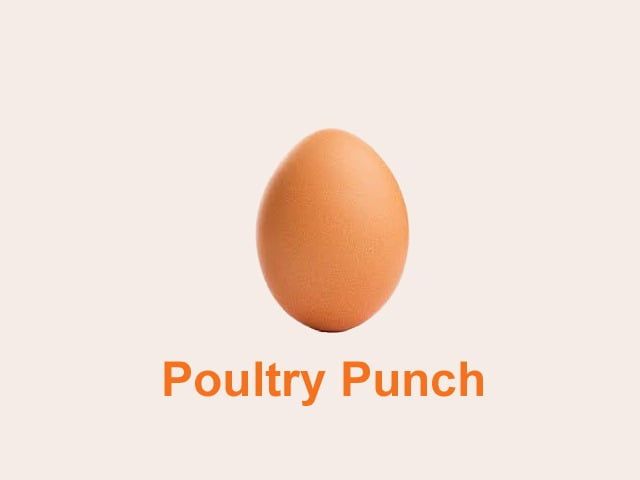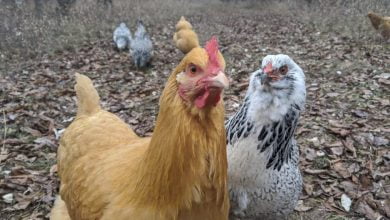Management factors for breeding stock
Dr. Majdood Ahmad, Retd. Dy. Comm. Poultry, (Govt. of India)
To attain both genetic potential and consistent flock production, it is important that the producer or flock manager has a good management programmed in place.
The following factors are of major importance for the production of hatching eggs that produce high quality chicks:
A. Genetic make-up of the parent stock
B. The housing of the flock
C. Flock health and applied vaccination program
D. Feed and water
E. Male to female ratio
F. Age of the flock
G. Flock performance
We shall go into details of the forgoing subjects:
A. The genetic make-up of the parent stock
Genetics of hatchability – egg quality from the perspective of a chick:
The successful production of a chick is a complex process which requires the fulfilments of several conditions; The Breeder Farm has a major influence on results at the Hatchery and it is essential for the Hatchery and the Farm to work close to each other.
1) Controlling factors of the Farm includes- Breeder Nutrition, Disease control, Matting activity, egg damage, correct male and female ratio, body weight, age, and matting ratio, Egg sanitation and Egg storage.
2) Controlling factors of Hatchery includes-Sanitation, Egg Storage, Egg damage, Management of setters and Hatchers and Chick handling.
3) A hen must produce an egg – hatchability depends on genetic and environmental factors affecting laying ability of a dam.
4) The egg must be fertilized – hatchability depends on successful mating between the dam and her mate (in naturally mated flocks) or insemination. Formation of a viable embryo in this process is affected by genetic and environmental factors originating from both the hen and her mate.
5) The laid egg must be of good quality to provide a suitable environment for the developing embryo, which again seems to be primarily a function of dam’s genotype and external environment during storage and incubation.
6) The chick must hatch – the ability of a matured chick to break out of the egg shell at hatching could be affected by the genotype of the embryo, the internal egg environment of egg and the environment to which the egg was exposed.
7) The genetic make-up of the parent stock is very important. The parent stock should be vigorous. Here again rearing plays an important part. Sexing errors need to be eliminated as chicks from false crossings do not possess the predicted characteristics. The rooster and hens you select have to be from good quality; even if you just have chickens for some eggs it’s important that the parents are very fit. They have to look good; nice feathers, good tail, good cam and more.
This is mainly because:
– There is a big change that aberrances of the parent chickens will by inheritance go to the baby chickens
– If the parents are not fit this can result in issues like large amount of non fertile eggs, dead embryos, weak chickens and more.
Select eggs from breeders that are fertilizing
B. The housing of the flock
The parent stock flock needs to be housed in well ventilated houses with correct indoor temperatures, litter in good condition (dry, not dusty, not crusty, without moulds), a well adjusted lighting program, sufficient feeder and watering space per bird. Concrete floors (asphalt) are essential for a good disinfection and the prevention of repeating worm infestations.
i) Ventilation is the most efficient method to reduce the amount of micro organisms in the air, which may contaminate the hatching egg. A correct control of the fans-eliminates draught, maintains an ambient temperature and supplies sufficient fresh air in the house. At the onset of lay, the deptt. of litter should not be too deep as this may result in many floor eggs. Instead of wood shavings coarse sand may be used.
ii) If drinkers stand or hang above the litter wet spots may be found, in which rotting bacteria and coccidia may develop giving rise to the explorers.
(iii) Compatible with their mates and produce a high percentage of fertile eggs;
(iv) Are not disturbed much during the mating season;
(v) Feed a complete breeder diet;
(vi) Inbreeding between directly related individuals to be avoided. [Brother, sister, mother, father, etc.]
C. Flock health and applied vaccination program
It is important that eggs from only a healthy flock are used for hatching, as some diseases can be transmitted through the egg. The importance using only hatching eggs from healthy disease free parent stock will be clear if one realizes that a number of poultry diseases are egg transmitted to the offspring. Use only p.p.l.o. and Salmonella pullorum free parent stock.
i) The egg-transmittable diseases to be most aware of are salmonella infections, fowl typhoid and Mycoplasma gallisepticum. Eggs laid by birds infected with disease may fail to hatch. Of those that do hatch, some chicks may die during brooding, and the survivors may act as carriers and infect healthy chicks.
ii) Do not add eggs from unknown sources to make up numbers, as you risk infecting your flock.
iii) Use only hatching eggs from healthy and vigorous parent stock to whom all recommended vaccinations have been administered according to schedule and who have undergone the blood test for Salmonella Pullorum.
iv) The vaccination against Epidemic Tremors (Avian Encephalomyelitis) should be given at least 4 weeks before collecting hatching eggs.
v) Never vaccinate against Infectious Bronchitis (IB) during the laying period.
vi) Parasitic infections such as coccidiosis, worms and the like have a bad effect on the hatch results.
vii) It is well to remember that the temperature and the humidity of the incubator create perfect conditions for the development of micro-organisms which are the causative agents of many poultry diseases.
viii) Also the incubator is an ideal place for multiplication and distribution of diseases which are on or inside the hatching eggs (brooder pneumonia, omphalitis)
ix) Some coccidiostats and antibiotics may be harmful to the hatching results if administered during the laying period.
D. Feed and water (Nutrition of breeding stock):
i) Feeding Broiler Breeders (Parent Stock):
Producers of broiler parent stock (broiler breeders) have the sole aim of obtaining the maximum number good-quality, fertile eggs and hatched broiler chicks. Parent stock will clearly possess the fast growing traits required by broiler birds, but these parent birds gain weight too quickly and hens suffer reduced egg production. Clearly there is an obvious conflict of interests to ensure proper growth and development with maximum egg production. This problem is overcome by carefully planned feed restriction using the following guidelines:
• Producers must ensure broiler breeder birds attain their mature weight at 24 weeks of age
• Give crushed millet or maize once per day during the rearing period and increase to three times a day during the laying period. Throw cereal on to the litter. Birds scramble for the grains, exercise and burn off fat.
• Reduce feed by 5 g a day, for every 50 g a bird registers over the optimum weight
• If rearing males and females separately, provide males with 30g of extra feed per day. If reared together only increase the feed by 5 g a day for each male bird.
ii) Feeding Layer Breeders (Parent Stock):
• The feeds given to layer parents will be more or less similar to that of commercial layers in respect of major nutrients.
• But the breeder feeds, especially the breeder hen feed is enriched with all micronutrients like trace minerals and vitamins in order to obtain high rates of fertility and hatchability besides peak egg production.
• Moreover, the breeder feeds must be practically free from all mycotoxin, because mycotoxin will not only affect the egg production and health status of the birds but also fertility and hatchability.
iii) Sex separate feeding
• The breeder males must be fed with a low protein diet having 13-14% protein only because high protein diet will affect sperm quality as well as semen volume.
• Therefore, sex separate feeding of breeder hens and cocks will be followed.
• The females will be fed a 18% protein and 3.0 to 3.5% calcium feed while the cocks with 13-14% protein and 1-1.5% calcium feed with higher levels (40mg/kg) of vitamin E; on other aspects, both the feeds are comparable.
• The male and female feeds are offered in separate feed hoppers in slat and deep litter system. In cage system, sex separate feeding can be followed with 100% accuracy since they are reared in different cages.
iv) Deficient nutrients and its Results:
The egg provides a complete food store for proper embryo development except gaseous oxygen, which enters the egg through pores in the shell. Breeding stock must be fed a well-balanced diet to fully meet the embryos’ nutrient requirements. A hatching ration should be fed to breeders for about eight weeks prior to saving eggs for incubation. The extra vitamins and minerals that it contains, as opposed to a laying ration, are essential for good hatchability. Sometimes, poor hatching results occur when a lower priced laying ration is used. The nutritional requirements of the breeder hen must be adequate for optimum hatching and good chick quality. The deficient nutrients are usually vitamins or minerals. A deficiency of these in the breeders’ diet may not show any ill effects in the breeders, though hatchability may be affected, which is why different categories are fed specific diets. Nutritional deficiencies, such as a lack of riboflavin, are the main causes of embryo mortality during the middle stage of incubation (i.e. between the 12th and 14th days).Hens’ vitamin and mineral requirements for laying eggs are lower than those of breeders. The breeder’s diet should begin six to eight weeks before hatching eggs are required, with particular attention to vitamin A, D3, riboflavin, pantothenic acid, biotin, folic acid, vitamin B12 and the mineral manganese.
Table.1. Deficient nutrients and its Results:
—————————————————————————————————-
Deficient nutrient Results
————————————————————————————————————
Riboflavin Leads to poor hatchability with a high incidence of malformed embryos, which are excessively moist
Leads to abnormal development of the embryo and a condition known enlarged hock/slipped Achilles tendon
B12 Leads to a rapid decrease in hatchability and a progressively poorer survival of chicks that do hatch
————————————————————————————————————-
v) Water Management
Facts indicate that 60% – 70% of the bird and 70% of the egg are made up of water. Hence, water becomes an absolutely essential element for the overall development. As birds don’t have inbuilt storage mechanisms, it becomes necessary to provide them water regularly. Water consumption in birds vary depending on weather conditions, feed consumption, mineral levels in feed and importantly the type of housing – floor or cage.
Since water plays a key role in the lifecycle and general well being of the bird, a good water management program is critical. Good quality water should always be sufficient and available in continuous supply. Effective water management ensures no microbiological or chemical contamination is found along with keeping the water cooler than environmental temperature.
For worry free layer farming, recommends you to test water samples as described below:
• Test for Microbiological contaminations at least once every month
• Test for Chemical contaminations at least once a year from every bore well
• Regularly disinfect water provided to the chicken
• Check if the water source is adequately disinfected or if sanitizer used is present in excess levels
Plan out a detailed action plan with experts after receiving the analysis / reports
vi) Effects of Nutrition on Infertility, Embryo Mortality and Hatchability
The effects of vitamin and mineral deficiencies on embryo mortality and malformations are well documented. General knowledge of breeder ration supplementation requirements is good and severe vitamin and mineral deficiencies are relatively unusual nowadays because vitamin and mineral premixes are generally reliable if sourced from suppliers who are ISO, HACCP and GMP accredited.
a) Occasional problems arise and the main findings from nutritional research and field observations are noted below.
i) Infertility may be associated with a deficiency of vitamin A, vitamin E or selenium, particularly in the male rations.
ii) Early embryo deaths may be associated with a deficiency of vitamin A (failure to develop circulatory system), vitamin E (circulatory failure), biotin, niacin, pantothenic acid, copper, selenium or thiamin. Excess boron or molybdenum could increase the proportion of early deaths.
iii) Mid-term embryo deaths have been associated with a deficiency of vitamin B12, riboflavin, phosphorus and zinc.
iv) Mid to late deaths have been associated with a deficiency of vitamin B12, niacin, pyridoxine, pantothenic acid and riboflavin
v) Late embryo deaths have been associated with deficiencies of vitamin B12, vitamin D, vitamin E, vitamin K, pantothenic acid, riboflavin, folic acid, biotin, calcium, manganese, magnesium, phosphorus, zinc, iodine and thiamin.
vi) Excess selenium could increase the proportion of late deaths. Achieving the optimal level of selenium supplementation can be difficult because there are variable levels of selenium in the soil (and thus plant feeding stuffs) depending on geographic region. In some cases, the use of organic selenium has resulted in improved fertility and hatchability.
vii) Excess iodine and vitamin D can cause high embryo losses.
viii) In case of prolonged vitamin B12 or niacin deficiencies, embryo mortality may change from early to late stage in incubation, and from late to early embryo deaths in case of prolonged riboflavin deficiency. Niacin can be formed from tryptophan, so a deficiency is usually the result of an antagonism with other dietary components. A deficiency of linoleic acid can affect embryos at all stages.
The supplementation requirements for egg production and hatchability differ.
ix) Egg production can be affected by deficiencies of energy, essential amino acids, and vitamin A, pyridoxine (B6), B12, magnesium, manganese, sodium, iodine and zinc, whilst deficiencies of vitamin D, calcium, phosphorus or zinc may exert an effect on hatchability through effects on shell quality.
x) An excess of crude protein may reduce fertility and a low energy to protein ratio in breeder rations can reduce hatchability.
xi) Contamination of breeder diets with ionophore anticoccidials (from the feed mill) or certain mycotoxin (from raw materials) can also lead to a reduction in hatchability.
xii) Some specific malformations in late embryos have been associated with deficiencies in:
• Vitamin B12 (short beak, poor muscle development in legs, perosis, early chick mortality).
• Vitamin D (stunting, soft bones, shortened upper beak).
• Vitamin E (hemorrhage in chicks after hatch).
• Vitamin K (high level of late dead, ectopic viscera and hemorrhage in the late dead).
• Biotin (shortened twisted legs, feet and wings, crooked beak (parrot beak)).
• Folic acid (bent legs, webbing between toes, parrot beak).
• Niacin (face abnormalities, missing beak).
• Pantothenic acid (subcutaneous hemorrhaging, abnormal feathering).
• Riboflavin (dwarfing, curled toes, edema, clubbed down).
• Iodine (incomplete closure of the navel, prolonged incubation period).
• Iron (anemia, pale colored circulatory system).
• Manganese (short leg bones, slipped tendons, parrot beak, deaths 18-21 days, globular head, short wings, protruding abdomen, edema).
• Zinc (spinal, limb and head abnormalities, small eyes).
xiii) Some specific malformations in late embryos have been associated with in:
*Excess iodine and vitamin D can cause high embryo losses. Excess iodine and vitamin D can cause high embryo losses.
*Loss of vitamin activity can occur if the vitamin pre-mix is stored inappropriately.
Excess iodine and vitamin D can cause high embryo losses.
*Excesses of boron (e.g. from insecticides used to treat litter) have resulted in face abnormalities and excess selenium can lead to late deaths, crooked toes, shortened wings and a short or missing beak.
xiv) Heat treatment of feed during conditioning and pelleting can result in the degradation of some vitamins.
xv) Vitamin recovery studies should be conducted at the feed mill in order to determine the level of degradation that occurs during heat treatment. This will enable supplementation levels to be adjusted to ensure that the final feed contains the desired vitamin levels.
b) Recommendations:
*Developmental abnormalities tend to be immediately obvious and memorable and it is usually important not to overemphasize their relevance. It must be borne in mind that malformations of the embryo can be caused not only by nutrition but also by adverse incubation conditions (e.g. high temperature). Thus, if a trait is seen at high incidence (i.e. most or all of the late dead embryos) on two or three consecutive trays this could indicate positional effects arising from uneven incubation conditions in the setter.
*The breeders should be fed according the rules for feeding as defined in the ISI management guides
* At the onset of egg production, special attention should be paid to the vitamin and trace element contents of the ration as well as to a proper balance in calcium allowances. Thin shelled eggs lower the hatching result. During stress periods give extra vitamins. Periodic supplementation of vitamins may prove favorable for a flock. Unbalanced feed and diseases may cause enteritis, whereby the absorption of the nutritional compounds decreases, these results in poor hatching eggs, lower hatchability and weak day old chicks.
* Drinkers and feeders need to be cleaned regularly to prevent the growth of moulds and the development of other micro-organisms. Pure – non ferrous – drinking water should be provided to obtain a good production and good hatching results. The water used when vaccinating birds should be clean. Clean the silos frequently to prevent them get moulds.
E. Male to female ratio
As production starts at least 8 males per 100 hens should be present. Ten males per 100 females represent the utmost limit. An excess as well as a shortage of males will cause fertility problems in the flock.
F. Age of the flock
It is wrong to expect good hatching results of first quality chicks from birds of 24 weeks or less. One should not collect hatching eggs from light breeds before 25 weeks of age. The poor hatching results at the onset of egg production is probably due to the relatively small yolks. Best hatching results are obtained from eggs collected from birds between the 8 and 13 months of age. If the male bird is active, not too large or overweight, and fertile, his age has little or no effect on hatchability or the vigor of the chicks. The older the cock bird, the fewer hens he can mate effectively without loss of fertility. Fertility and hatchability also decrease, as the hen’s egg production drops with age, and is highest during her first and second laying season. A healthy breeder flock, females with a good rate of lay mated to vigorous males, will usually produce highly fertile eggs that hatch well under good incubation practices. Hatching eggs from new breeder flocks (just starting to lay) do not hatch as well as eggs from those that have been laying for three to four months. Hatchability of eggs from old breeders nearing the end of their laying period also declines.
G. Flock performance
Generally, there exists a positive correlation between production and hatchability. Any factor bringing about a drop in production may affect hatchability as well.
a) Flock management to achieve uniform eggs from uniform hens:
Suitable Eggs for hatching are within the 50-70g range for which the whole flock should behave as a single unit; starting production at one time and following the same pattern to the end. Egg size depends on many factors; viz; genetic make-up, the age of the hen, its body size, feeding and watering, environmental conditions, and health status. Uniform eggs can be produced only by a uniform flock; uniform body size, maturing at the same age, free of diseases and physiological disorders.
b) To achieve uniform skeleton size in the flock at 12 weeks of age:
i) Ensure a good and even start for the chicks as soon as they are housed. Pay special attention to reception, housing conditions, hygiene and other help to maximize growth in the first week. All chicks should start well, even those that are weak.
ii) Start working on uniformity at the end of the first week. Select and protect smaller chicks, to give them the chance to catch up with the majority of the flock.
iii) Introduce feed restriction early, feeding ad-libitum only in the first seven days of life.
iv) Grade for the first time as early as possible, ideally at 4 weeks of age.
v) Aim to maintain average body weight close to standard at 6 and 12 weeks of age.
vi) Avoid the need to correct body weight. Regular increase in feed and accurate, frequent control is essential for linear growth.
c) Hens that were uniform at 11-12 weeks of age and having a similar frame size, will tend to maintain uniform body weight unless disrupted by, for example, limited access to feed, too high stocking density, diseases or other management errors are involved.
The recipe for uniform egg size is simple:
i) Take care of uniformity in our breeder flock. Pay special attention to rearing-especially in the early days. Make sure the hens are uniform both by skeleton size and weight,
ii) Adjust programs that stimulate maturity to the average development of the flock,
iii) Keep egg size under control. Do not over feed and apply water restriction in production period.
